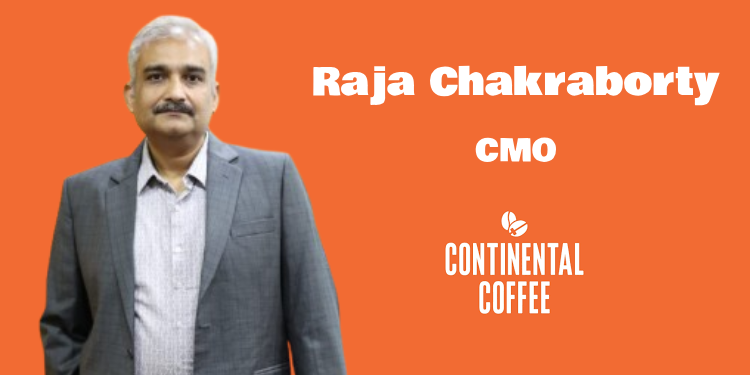India’s love for tea is globally renowned—so much so that even international coffee chains have adapted to the trend by introducing items like “Chai Latte” and “Chai Tea.” But while tea has long been the nation’s beverage of choice, coffee is steadily gaining traction. Once primarily popular in the southern states, coffee consumption has seen a 30% rise across the country since 2018, stretching its appeal beyond the South.
Espresso, cappuccino, and latte are now regular features in office pantries and college canteens. Yet, the growing presence of South India’s beloved filter coffee in homes and cafes across India signals a broader cultural shift. Interestingly, the most remarkable growth in coffee consumption is occurring in tier-2 and tier-3 cities emerging as dynamic new consumer markets.
According to the PRICE report, by 2047, nearly half of India’s population will belong to the middle class, bringing increased disposable income for lifestyle purchases like branded coffee. This shift aligns with the rise of speciality coffee consumption, with an estimated 20-25 million Indians now exploring this space. Clearly, coffee culture is no longer limited to metropolitan areas; it is expanding rapidly, fuelled by aspirational youth from smaller cities eager to experience modern trends.
This new generation in tier-2 and tier-3 cities presents a massive opportunity for coffee brands. Tech-savvy, ambitious, and eager to engage in contemporary lifestyles, young consumers in these regions have developed a growing affinity for coffee culture. The challenge for brands lies in crafting campaigns that speak to their aspirations while remaining rooted in the traditions and values of their hometowns.
How Coffee Brands Are Winning Over Smaller Cities
To succeed, coffee brands need to localise their marketing efforts, especially during festive seasons. Festivals are deeply emotional and cultural touchpoints in smaller cities, offering brands the perfect chance to create memorable connections with consumers.
One approach that has proven effective is aligning coffee with the aspirations of young consumers from smaller towns. By positioning coffee as a symbol of creativity, success, and energy, brands can make it an essential part of daily routines. Campaigns that focus on relatable stories of ambition and personal growth resonate deeply with this audience, helping to build strong brand affinity.
Another strategy involves celebrating coffee’s role in fostering connection and togetherness, particularly during regional festivals. By tapping into the emotional and familial aspects of coffee consumption, brands can integrate their offerings into cultural celebrations, making coffee a meaningful part of these special occasions.
Physical presence also plays a key role in reaching this growing audience. Coffee kiosks or mobile carts strategically located near popular spots or festival venues can provide convenience and visibility. These kiosks offer an on-the-go experience that appeals to the youth and busy professionals in these cities, further embedding coffee into their everyday lifestyles.
With millions of young people eager to explore modern experiences, the potential for coffee brands in tier-2 and tier-3 cities remains vast. Blending modernity with tradition will continue to be the key to capturing this dynamic and rapidly evolving market.
Festive Strategies for Localized Coffee Marketing
To effectively penetrate tier-2 and tier-3 cities, coffee brands must go beyond generic marketing and immerse themselves in local traditions. Festivals like Ganesh Chaturthi, Navratri and Diwali, where small cities come alive with cultural vibrancy, present a golden opportunity to engage consumers in a meaningful way. These celebrations offer brands the chance to connect with their audience at a deeper, more personal level. Take Navratri as an example: In smaller cities, young people often spend late nights playing Garba with friends, staying out well past midnight. After hours of dancing, they seek out places to relax and unwind. This is where strategic marketing comes in. Here’s how:
- Mobile Coffee Carts: Much like the rise of ice cream carts, mobile coffee carts have become popular in many cities. Coffee brands can leverage this trend by deploying branded carts near festival venues or popular hangout spots. These carts not only capture the attention of the festival crowd but also offer a convenient, on-the-go coffee experience. A well-placed coffee cart, dispensing hot brews or cold coffees late into the night, would naturally attract young revellers looking for a place to recharge.
- Tailored Festive Promotions: During festivals, consumers are more open to indulging in new experiences and making purchases. Coffee brands should create special festive bundles that pair coffee with traditional snacks, tapping into local culinary preferences. Offering regionally tailored promotions, like a Garba-night combo or a Diwali gift set, can create a unique festival experience that encourages trial among new customers.
- Limited-Time Offers: Festivals also provide an opportunity to generate urgency through time-sensitive promotions. Offering limited-time discounts on popular coffee blends or creating exclusive festive flavours can drive impulse purchases. Brands can amplify these offers by running targeted digital campaigns highlighting these deals during the peak shopping days leading up to major festivals.
- Community Engagement: Active participation in local festivals can strengthen brand visibility and forge lasting relationships with the community. Hosting pop-up stalls at festival venues, organising coffee-tasting sessions, or even running workshops on brewing techniques can create buzz and give consumers a hands-on experience with the brand. These engagements foster familiarity and trust, making the brand a part of their festive memories.
- Sponsorships and Collaborations: Sponsoring local events or collaborating with cultural organisations can significantly boost brand presence. By aligning with community-driven initiatives or partnering with festival organisers, coffee brands can increase their visibility while showing a commitment to preserving local culture. This not only enhances brand perception but also deepens emotional ties with consumers.
- Cultural Relevance: Localising campaigns to reflect cultural values and traditions is key to building a strong emotional connection with consumers. For example, during Diwali, a campaign showcasing how coffee can bring warmth to family gatherings or elevate festive celebrations can resonate deeply. Using regionally relevant imagery and symbols in campaigns will increase engagement and ensure the brand’s message aligns with the consumers’ values and experiences.
In conclusion, to succeed in India’s tier-2 and tier-3 cities, coffee brands must go beyond selling a product—they must embed themselves within the local lifestyle and cultural narrative. Festivals provide a unique opportunity to blend modernity with tradition, appealing to consumers’ desires for contemporary experiences while honouring their deep cultural roots. By doing so, brands can forge long-lasting connections that go beyond festive seasons, becoming an essential part of everyday moments and celebrations alike.
As coffee culture continues to grow in India, brands that successfully merge the past with the present will shape the nation’s evolving relationship with this beloved beverage.
(Opinions expressed are Personal)

















